Elemental Discoveries Issue 40 - Memories are made of this
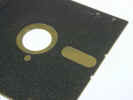 Over the last forty years, the length of magnetic tape needed to store the smallest unit of binary information (a 0 or a 1) has decreased from 250 micrometres to less than 1µm. Concomitant with that incredible improvement in capacity is the increasing number of 0s and 1s we need to store. Just ten years ago, a 1000-word document saved in a popular word-processing package might require a couple of
Over the last forty years, the length of magnetic tape needed to store the smallest unit of binary information (a 0 or a 1) has decreased from 250 micrometres to less than 1µm. Concomitant with that incredible improvement in capacity is the increasing number of 0s and 1s we need to store. Just ten years ago, a 1000-word document saved in a popular word-processing package might require a couple of kilobytes. Today that figure is usually around ten times that.
kilobytes. Today that figure is usually around ten times that.
It's a self-perpetuating spiral. As computer power improves, as it does, doubling approximately every eighteen months, the software companies continue to add new features to their programs, with each new feature, formats get slightly bigger. The humble floppy disk drive, with its slightly more than a megabyte storage space, was perhaps one of the first devices to succumb to the almost overwhelming information glut that we create. It has been displaced by the likes of larger capacity 'hard floppies' and writable CD-ROMs, the media for which are just as disposable as floppy disks, at a few pence per unit.
Of course, one can still use plain ASCII for storing text documents, which reduces the storage overhead considerably, but it rather limits one's use of all those bells and whistles, such as grammar checkers, editorial tracking, embedded, fonts, active hyperlinks, pasted graphics and such. Then, there is always algorithmic compression, such as the PKZip formats for IBM PCs and Stuffit for Apple Macintosh. Indeed, there is a whole range of techniques applicable to different types of file that can be used to reduce the need for ever more storage space. The JPEG format for instance allows graphics to be compressed massively at the cost of some visual clarity, while the MP3 format does the same for audio files.
Even then, compression seems only to make computers users more hungry for information, so where ten years ago, most of us would have been happy to keep printed photographs in an album it is now all but essential to make an album of family snapshots on CD-ROM or to 'backup' music from audio CD on to one's hard drive At the professional end of audio and video too, demands are even greater. Once we begin to look at scientific computing applications - molecular graphics, reaction databases, and chemical spreadsheets and the like - it becomes increasingly obvious that we are lacking capacity. Just as with kitchen cupboards, that once seemed more than adequate for a few tins of beans and a couple of saucepans, we might soon run out of storage space.
look at scientific computing applications - molecular graphics, reaction databases, and chemical spreadsheets and the like - it becomes increasingly obvious that we are lacking capacity. Just as with kitchen cupboards, that once seemed more than adequate for a few tins of beans and a couple of saucepans, we might soon run out of storage space.
Indeed, Japan's Optoelectronic Industry and Technology Development Association has extrapolated our needs to the year 2010. It reckons data storage to serve an average computer network will be 1-100 terabytes while a wide area network will be approaching 1 petabyte (a quadrillion bytes) by that time.
Luckily, there are innovators everywhere and new magnetic materials for making hard disk drives have taken us very rapidly from slow-spinning disks with a maximum of a few tens of megabytes a decade ago to the near-100 gigabyte desktop PC hard disk. Improvements in coatings technology and the ability to more accurately address each bit of these faster disks has helped make this possible. The development of alternative technologies such as variations on the magnetoresistive recording (MR) head in hard drives too are allowing researchers to pack in even more bits and bytes on to smaller and
 smaller areas.
smaller areas.
We have come along way from the giant fridge-sized, one ton, RAMAC hard drive created by IBM in 1956 and storing just 5 million characters. The magnetic layer on its 24 inch disk was reputedly formed from the primer paint used to undercoat San Francisco's Golden Gate Bridge.
The latest technologies could push that limit still further See Hard Disk Box. However, they will eventually come up against the superparamagnetic limit, at which point the energy needed to flip between a 1 and a 0 is close can be provided by the ambient temperature so that data is lost through random flips. Magneto-optical technology could help developers bypass this limit. The hybrid technology uses a highly focused laser beam to heat the point at which a bit of data is to be stored on the magnetic layer data. In this system, because data can only be stored if the magnetic material is heated in this way and the heating takes place on very tiny points far more bits can be crammed on to the same area. In fact, 200 gigabits per square inch are envisaged with the latest technology in this area, which is up to ten times greater than presently possible.
As mentioned above, the merging of floppy and hard technologies has led to high density portable disks that carry about 200 times as much data as the standard floppy, while optically based drives, such as CD-ROMs and DVDs can carry 750 megabytes and 4.7 gigabytes or so, respectively. These devices are now all easily writable and even rewritable at little expense. With compression that means the equivalent of 740 minutes of music can be captured on a single CD-ROM disk and 30 hours of VHS-quality video with sound on a current DVD. The 'Complete Works of Shakespeare' in ASCII format takes up a mere fraction of the storage space everyone with a modern personal computer has available to them now.
740 minutes of music can be captured on a single CD-ROM disk and 30 hours of VHS-quality video with sound on a current DVD. The 'Complete Works of Shakespeare' in ASCII format takes up a mere fraction of the storage space everyone with a modern personal computer has available to them now.
The natural successor to the standard CD and DVD is now being developed. The FMD ROM or fluorescent multi-layer disc will smash existing capacity barriers with the first generation 120 mm, CD-sized, media expected to hold 50- 140 Gigabytes of pre recorded data in about 20 data layers just 2 mm thick; up to 100 layers might be possible. The data transfer rates are likely to be about 1 gigabit per second. FMDs will use basically the same technology as CD-ROM but rather than the laser changing the structure of the polymeric data layer to form reflective pits in the disk, the action of the laser will produce fluorescent pits. The increased capacity arises from the fact that the incoherent light from these fluorescent bits can be filtered and read so that data can be
stored in several layers with the read laser focusing on only the fluorescent layer it needs to read.
 Holographic storage on the other hand, offers a rather futuristic-sounding view of data storage that is on the verge of commercial availability from the Laboratories of the likes of IBM and Bell. A laser beam carries data and makes a chessboard pattern on a photosensitive recording medium based on a polymeric brew, which results in an array of 1s and 0s i.e. where the laser leaves a mark or not. A laser is then used again to 'read' the information back. The system is, at present, WORM - write once read many; like a standard CD-ROM. But, storage is possible at a much higher density of 30 Gbits per square inch. Ultimately, 1-terabyte storage with ten times faster data access than current systems on a chunk of polymer the size of a sugar cube might be possible. The full screen audio-video version of Shakespeare could then be crammed on to a single disk.
Holographic storage on the other hand, offers a rather futuristic-sounding view of data storage that is on the verge of commercial availability from the Laboratories of the likes of IBM and Bell. A laser beam carries data and makes a chessboard pattern on a photosensitive recording medium based on a polymeric brew, which results in an array of 1s and 0s i.e. where the laser leaves a mark or not. A laser is then used again to 'read' the information back. The system is, at present, WORM - write once read many; like a standard CD-ROM. But, storage is possible at a much higher density of 30 Gbits per square inch. Ultimately, 1-terabyte storage with ten times faster data access than current systems on a chunk of polymer the size of a sugar cube might be possible. The full screen audio-video version of Shakespeare could then be crammed on to a single disk.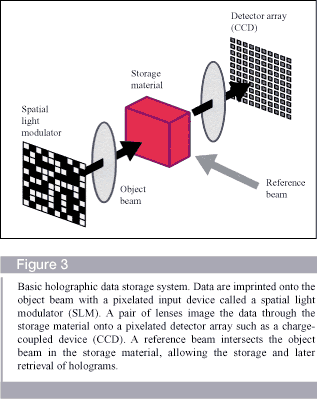
Meanwhile, IBM researchers are working on an extension of the atomic force microscope. This device was originally used to map surfaces at the atomic level by using a single atom held at the tip of a probe. Disturbances in the atom's electric field as it approaches the atoms of the surface are recorded and converted into images of the atoms laid out on the surface.
IBM has now built what they call the Millipede, an AFM, which has a potentially ultrahigh density, terabit capacity and will be very fast in data transfer. It uses an array of micromechanical cantilevers in a 32x32 array giving, 1024 points separated at the nanometre scale. Very thin polymer (polymethylmethacrylate) films will be the medium for this cutting edge device. A storage density of 400-500 Gb per square inch is being predicted by IBM researchers, and they have already demonstrated a 100-200 Gb per square inch capacity.
Molecules, of course, represent the ultimate storage device. If a single molecule can be switched between two distinct states, we might see it as a 0 and a 1. At the thresholds of today's science, researchers are estimating that about 1000 molecules would be the minimum unit that could encapsulate a bit of data and still be readable.
The laws of computing as they are say that computing power approximately doubles every eighteen months, while storage capacity too has been in an exponential growth phase for at least the last decade. The commercial prowess and position in the marketplace for the manufacturers seems destined to forever rely on their ability to maintain these spirals in an upward direction. If your hard disk is getting a bit too full of MP3s, JPEGs, and DOCs, there might be a lot more electronic cupboards to fill just round the corner.
In the short term we can simply expect to see the storage devices
on our desktops following the upward spiral of power and capacity so that
we will be able to pack more and more data on to more efficient and faster
hard disks. DVD writers will become increasingly common and displace
CD-ROM as a backup, dissemination and presentation medium. Meanwhile, FMD
drives will enter the market in the medium term taking storage capacity up
another notch.
In the long-term, atomic and molecular based storages devices will
begin to emerge 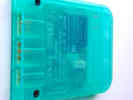 from
various research laboratories as the academic fundamentals being laid down
today are applied to create new technologies and as the devices needed to
control atoms and molecules become cheaper. As a kind of footnote, to
storage, we might even see the next generation Internet providing us with
distributed storage along the lines of the Napster music system that
allows individuals to share their MP3 music files with each other, it
might be more effective to rent space on someone else's hard disk rather
than upgrade one's own.
from
various research laboratories as the academic fundamentals being laid down
today are applied to create new technologies and as the devices needed to
control atoms and molecules become cheaper. As a kind of footnote, to
storage, we might even see the next generation Internet providing us with
distributed storage along the lines of the Napster music system that
allows individuals to share their MP3 music files with each other, it
might be more effective to rent space on someone else's hard disk rather
than upgrade one's own.
Whatever the future of data storage rest assured that files will
get bigger, expanding with each software upgrade or new package, As with a
new home, where once you could not imagine filling all those cupboards,
you will simply never have enough storage space.
Molecular memory
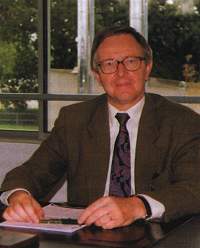 The final frontier in data storage, just before one enters the realm of the quantum is the molecule. If a molecule can be built that can switch between two distinct states then we have a switch, and with such a
'bistable' switch the ability to represent the binary 1s and 0s. Each bit of information will take up the volume of a cluster of molecules, each byte just eight. A mole of memory molecules might then be enough to store 10exp10 gigabytes of data. Plenty enough for even the hungriest of applications!
The final frontier in data storage, just before one enters the realm of the quantum is the molecule. If a molecule can be built that can switch between two distinct states then we have a switch, and with such a
'bistable' switch the ability to represent the binary 1s and 0s. Each bit of information will take up the volume of a cluster of molecules, each byte just eight. A mole of memory molecules might then be enough to store 10exp10 gigabytes of data. Plenty enough for even the hungriest of applications!
The first challenge is that they must be able to create viable bistable molecules. The second is to find a way to 'write' and 'read' the states. While they tackle these challenges they also have to make sure the devices will work at room temperature.
Work started by the late Olivier Kahn and his colleagues at the Institut de Chimie de la Matière Condensée de Bordeaux is looking into two types of memory molecules. Spin crossover compounds and molecular magnets.
The first, spin crossover compounds, have been known since 1931. They contain an octahedrally coordinated transition metal ion with the 3dn electronic configuration and can cross over between a low spin (LS) and a high spin (HS) state. They flip between states with a temperature change, or under pressure or when light is shone on them. They are 'read' by their optical absorption. Cross-over compounds containing the Fe2+ ion have an LS and HS state characterised by spins of S = 0 (diamagnetic) and S = 2 (paramagnetic) and flip between them in a nanosecond.
The Bordeaux team used two approaches to making viable bistable crossover compounds - polymeric and a supramolecular approach. The polymeric approach links the active ions with chemical bridges, such as 4-R-1,2,4-triazole molecules
(Rtrz), boosting the effect in [Fe(Rtrz)3] A2.nH2O. On crossover, these materials change from the violet LS state to a white HS state, this occurs abruptly but at an elevated temperature.
Their supramolecular approach involves using crossover crystals that cooperate through space rather than chemical bridges. By stacking aromatic rings they have achieved such strong intermolecular interactions and a bistable state at 293K.
The ability to fine tune the working temperature range and to operate at room temperature, having a low thermal addressing power, a short addressing time, and a very small bit size are the critical properties of the polymers that Bordeaux is developing. But, such properties are equally as important for the development of any bistable molecule for memory applications. They have to be mean on power, fast and small. A micrometre of magnetic tape is needed to trap a bit of information at today's storage standards but a single cluster of molecules might do the job just as well. Indeed, the smallest particle that could store a bit of information is not one spin crossover molecule the smallest particle that exhibits cooperative behaviour. The Bordeaux team has calculated that about a thousand strongly interacting units - the equivalent of a 4 nanometre cube - will yield a two orders of magnitude decrease in the bit size.
The second type of memory molecules being studied in the Bordeaux lab are molecular magnets, which respond to a changing magnetic field and can be read by their magnetisation. When a sufficiently large magnetic field is applied, the magnetisation becomes saturated. When the field is switched off, the magnetisation vanished only gradually. A field applied in the opposite direction deletes it hinting at a memory effect for molecular magnets.
The Bordeaux group has built a supramolecular material containing three kinds of spin carriers, Co2+ and Cu2+ ions together with an organic radical
cation. So far, the material works at 37K but requires a strong deleting field - some 1 two 2 Tesla. This is about two orders of magnitude stronger than the field needed to erase an old-fashioned CrO2 cassette tape, so it will make a strong memory.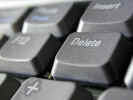
Meanwhile, Kazuhito Hashimoto at the University of Tokyo in Japan has built a reversibly switching molecular magnet that changes from a paramagnetic to a ferrimagnetic states when a light it shone on it. Optical switching is one of the most intense areas of interest in memory molecules. Philipp Gütlich at the University of Mainz, Germany, is working on optical addressing. He has found that green light switches the LS state into a long-lived HS state at about 10K. Red light switches the molecule off again.
Once the teams achieve room temperature switches, molecular memory will spring into action.